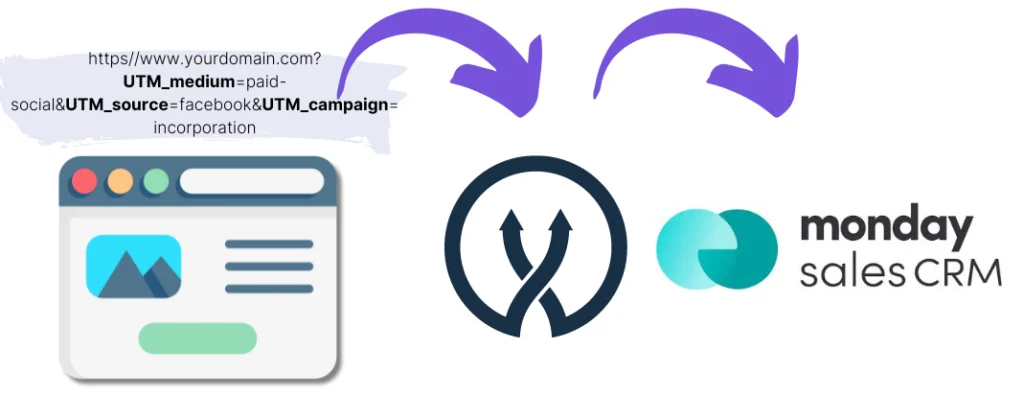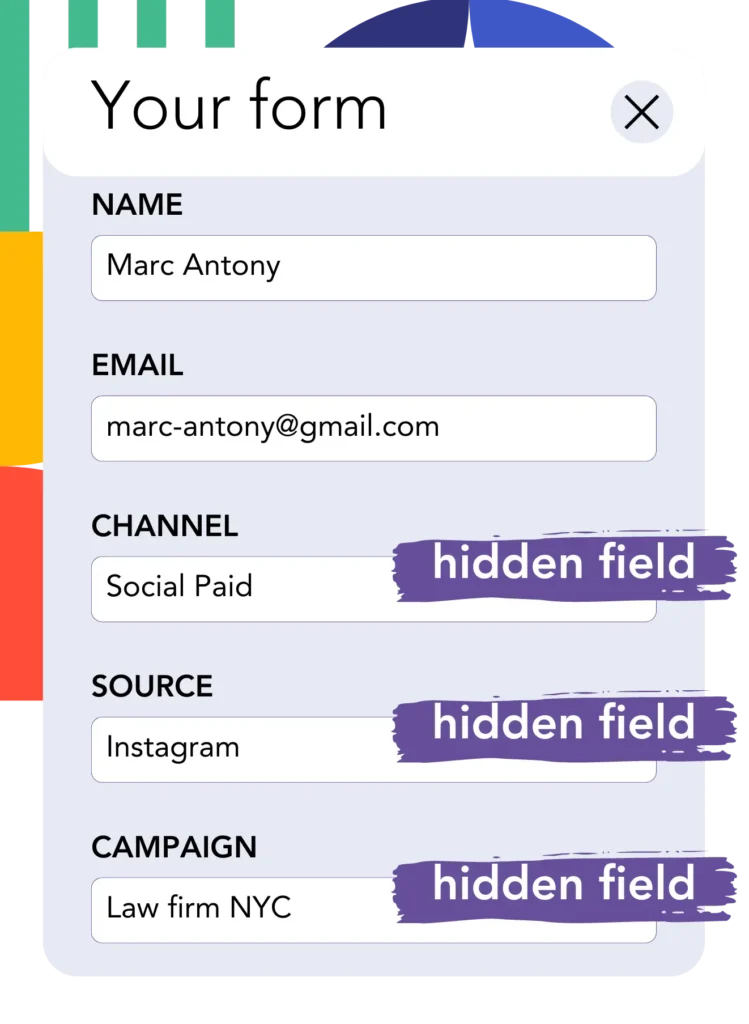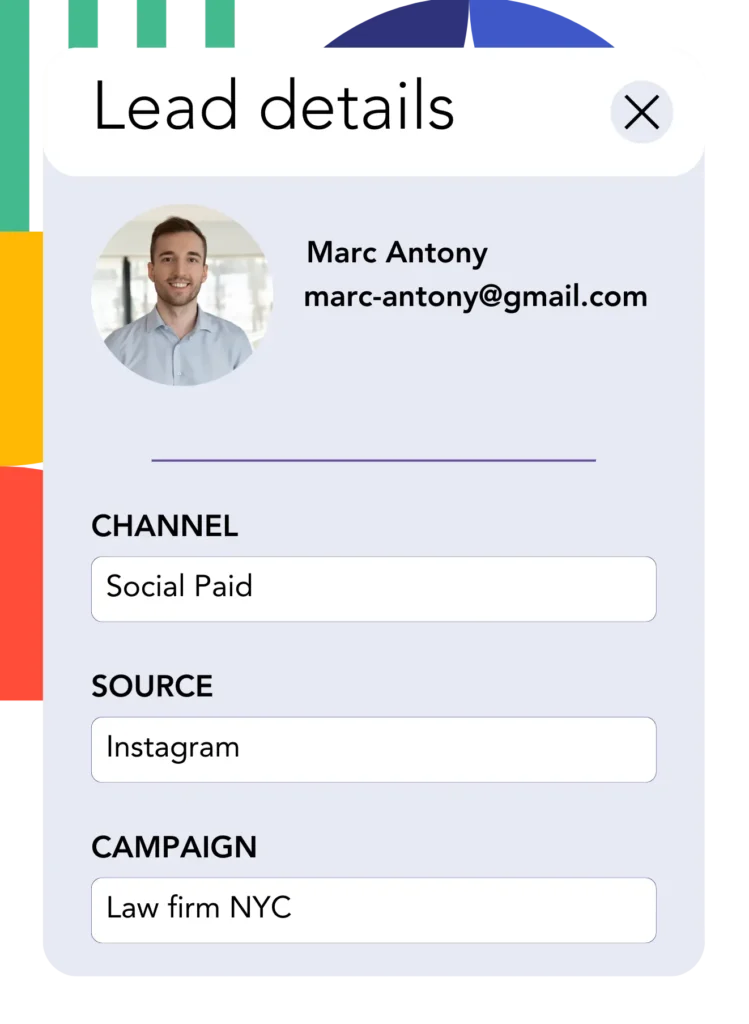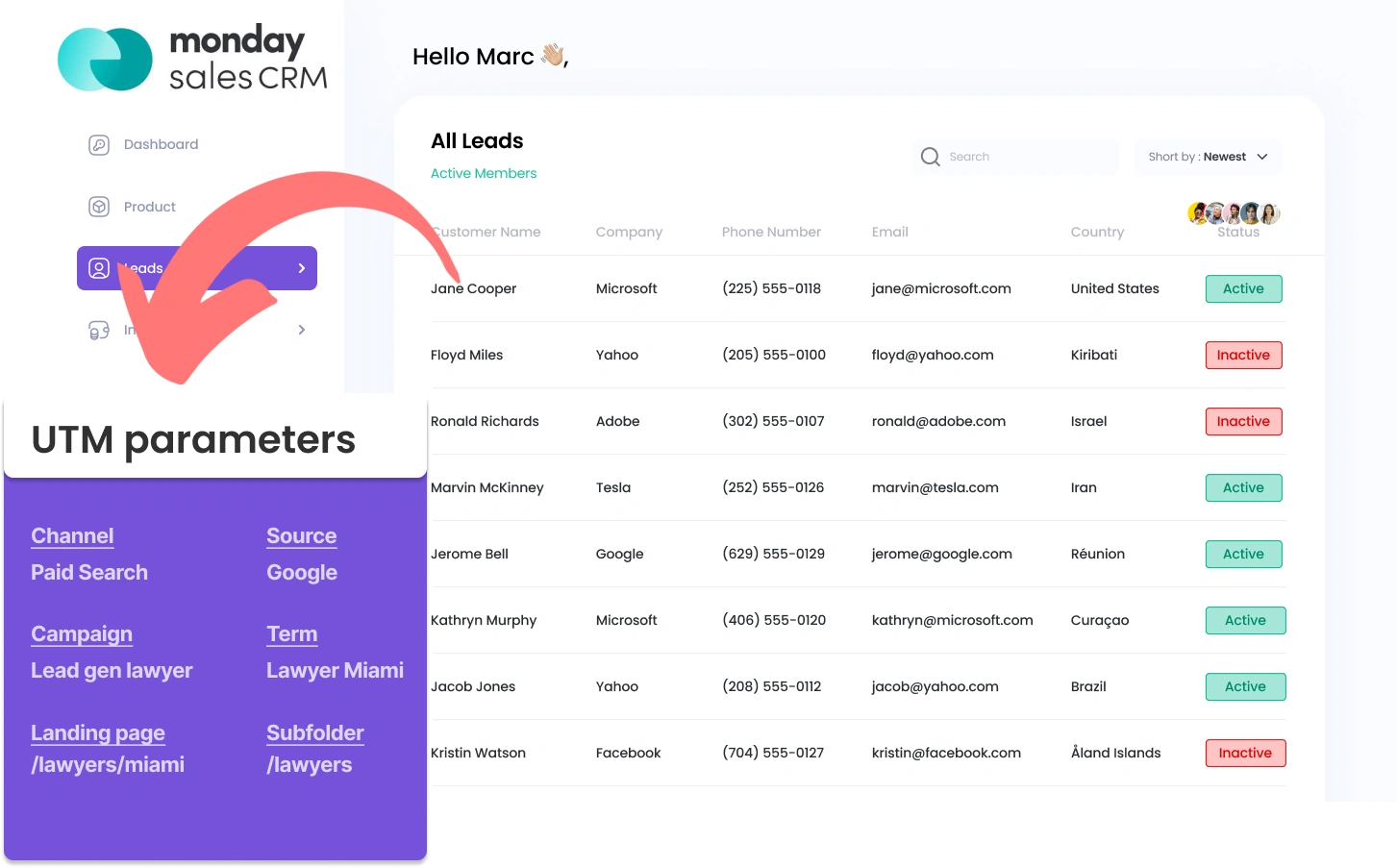Understanding UTM parameters in monday CRM can be challenging, particularly if you don’t have coding experience.
Imagine capturing UTM parameters in monday CRM, with no coding required at all.
Meet Leadsources.io!
Leadsources is a lead source tracking tool that acts as a middleman between your UTM parameters and your CRM (in this case, monday CRM).

When a visitor clicks on your marketing campaign, Leadsources grabs the UTM parameters from the URL.
Leadsources then automatically adds these parameters to the hidden fields in your form.
By linking your form with monday CRM, you can view your new leads and their UTM parameters in monday CRM.
This helps you run reports to find out where your most valuable customers come from.
This guide will walk you through setting up UTM parameter tracking in monday CRM with Leadsources in just 10 minutes, no coding needed.
Capture UTM parameters into monday CRM in 4 easy steps
Step 1: Add Leadsources in the head tag of your website

Leadsources is a simple tool that tracks the source of your leads. Once added to your website, it gathers up to 7 pieces of lead source information for every lead.
➡️ Sign up to Leadsources.io for free
➡️ Add the Leadsources tracking code to your site
Step 2: Add the UTM parameters to your campaigns

Identify the UTM parameters you wish to track in every campaign (PPC, email, social media, etc.).
Leadsources works with these UTM parameters:
- UTM_source
- UTM_campaign
- UTM_term
- UTM_content
Leadsources collects more than UTM parameters, capturing the channel, landing page, and landing page subfolder as well.
Step 3: Add the hidden fields to your form

Leadsources automatically adds the UTM parameters to the hidden fields of your form (channel, source, etc.) when visitors submit their information (name, email, etc.).
Step 4: Track the UTM parameters into monday CRM

Upon clicking your campaign and visiting your website, Leadsources captures the UTM parameters from the URL.
These UTM parameters can be sent from your form builder to monday CRM. You can then track the source of your leads, sales and revenue directly on monday CRM.
This allows you to close the loop between your marketing efforts and your sales performance.
How does Leadsources work?
When you add the Leadsources code to the head section of your website, it will capture UTM parameters from the URL each time a visitor lands on your site.
It then stores the UTM parameters in the hidden fields of your form.
Even if no UTM parameters are present in the visitor’s URL, Leadsources tracks their data using the referrer:
- Channel
- Source
- Campaign
- Landing page
- Landing page subfolder
This method lets you track important lead source data even if UTM parameters are unavailable or not preferred, such as:
- On Google Search
- On your Instagram bio link
- On your social media posts
Although UTM parameters are typically necessary for lead source tracking with most tools, Leadsources provides tracking capabilities no matter the origin:
- Organic Search
- Paid Search
- Organic Social
- Paid Social
- Referral
- Affiliate
- Display Advertising
- Direct Traffic
This ensures that all your lead source information is consolidated into one neat place.
How to run performance reports
Now that you have captured your UTM parameters into monday CRM, you can use it to run performance reports such as:
- Leads per channel
- Revenue per channel
- Revenue per keyword
This aids in making data backed decisions about how to best use your marketing funds.
Let’s analyze the different reports you’re able to generate.
Lead performance reports
You can run reports showing the volume of leads generated by:
- Channel
- Source
- Campaign
- Landing page
- Landing page subfolder
Example #1
If you are conducting campaigns across different channels (SEO, PPC, email, etc.), you can pull the data and generate a report called: “Leads by Channel.”

Example #2
Once you identify the most effective channel for lead generation (e.g., Google Ads), you can proceed by selecting this channel and breaking down the number of leads generated by each ad campaign.

Example #3
Once you know which campaign produces the most leads, you can take a closer look by analyzing the exact keywords responsible for generating those leads.

Sales performance report
Identifying the ads and keywords that yield the most leads is valuable, but does it necessarily mean they are also enhancing your revenue?
Sending your form submissions to monday CRM lets you create reports on sales performance.
Example:
| Channels | Search Paid | Social Paid |
| Leads | 50 | 75 |
| Sales | 5 | 6 |
| Average order value | $150 | $100 |
| Revenue | $750 | $600 |
Following your ad campaigns on Google and Facebook, it was evident that Social Paid ads generated a higher number of leads than Search Paid ads.
Over a few weeks, you found that the Search Paid channel delivered more revenue with a lower volume of leads than Social Paid. This insight helps you choose to boost your budget for Search Paid.
LeadSources tracks the source of each lead in monday CRM, whether they come from ads, organic search, social, email, etc. and syncs that data with each submission. See the full breakdown on the lead source in monday CRM page.

